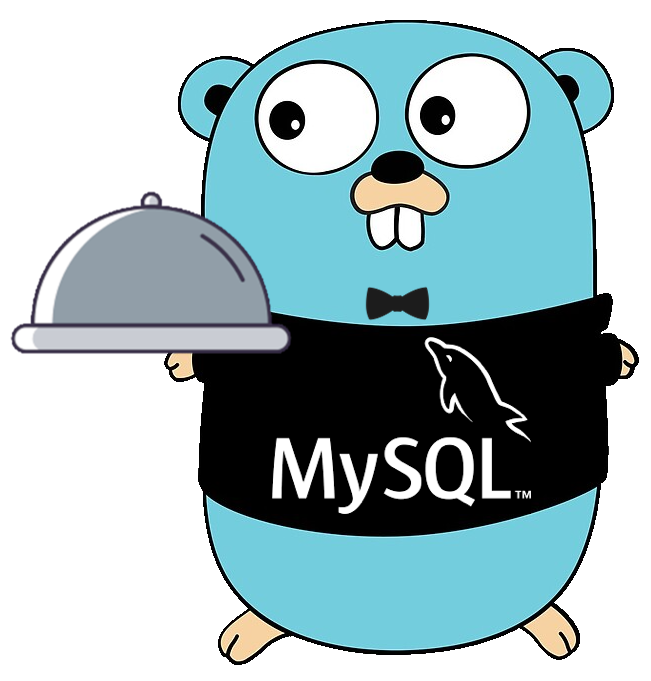go-mysql-server is a data-source agnostic SQL engine and server which runs queries on data sources you provide, using the MySQL dialect and wire protocol. A simple in-memory database implementation is included, and you can query any data source you want by implementing your own backend.
Dolt, a SQL database with Git-style versioning, is the main production database implementation of this package. Check out that project for a reference implementation. Or, hop into the Dolt Discord server here if you want to talk to the core developers behind go-mysql-server and Dolt.
With the exception of specific limitations (see below), go-mysql-server is a drop-in replacement for MySQL. Any client library, tool, query, SQL syntax, SQL function, etc. that works with MySQL should also work with go-mysql-server. If you find a gap in functionality, please file an issue.
For full MySQL compatibility documentation, see the Dolt docs on this topic.
- SQL server and engine to query your data sources.
- In-memory database backend implementation suitable for use in tests.
- Interfaces you can use to implement new backends to query your own data sources.
- With a few caveats and using a full database implementation, a drop-in MySQL database replacement.
go-mysql-server has two primary uses case:
-
Stand-in for MySQL in a golang test environment, using the built-in
memorydatabase implementation. -
Providing access to arbitrary data sources with SQL queries by implementing a handful of interfaces. The most complete real-world implementation is Dolt.
Add go-mysql-server as a dependency to your project. In the
directory with the go.mod file, run:
go get github.com/dolthub/go-mysql-server@latest
The in-memory test server can replace a real MySQL server in tests. Start the server using the code in the _example directory, also reproduced below.
package main
import (
"context"
"fmt"
"time"
"github.com/dolthub/vitess/go/vt/proto/query"
sqle "github.com/dolthub/go-mysql-server"
"github.com/dolthub/go-mysql-server/memory"
"github.com/dolthub/go-mysql-server/server"
"github.com/dolthub/go-mysql-server/sql"
"github.com/dolthub/go-mysql-server/sql/types"
)
// This is an example of how to implement a MySQL server.
// After running the example, you may connect to it using the following:
//
// > mysql --host=localhost --port=3306 --user=root mydb --execute="SELECT * FROM mytable;"
// +----------+-------------------+-------------------------------+----------------------------+
// | name | email | phone_numbers | created_at |
// +----------+-------------------+-------------------------------+----------------------------+
// | Jane Deo | janedeo@gmail.com | ["556-565-566","777-777-777"] | 2022-11-01 12:00:00.000001 |
// | Jane Doe | jane@doe.com | [] | 2022-11-01 12:00:00.000001 |
// | John Doe | john@doe.com | ["555-555-555"] | 2022-11-01 12:00:00.000001 |
// | John Doe | johnalt@doe.com | [] | 2022-11-01 12:00:00.000001 |
// +----------+-------------------+-------------------------------+----------------------------+
//
// The included MySQL client is used in this example, however any MySQL-compatible client will work.
var (
dbName = "mydb"
tableName = "mytable"
address = "localhost"
port = 3306
)
func main() {
pro := createTestDatabase()
engine := sqle.NewDefault(pro)
session := memory.NewSession(sql.NewBaseSession(), pro)
ctx := sql.NewContext(context.Background(), sql.WithSession(session))
ctx.SetCurrentDatabase(dbName)
// This variable may be found in the "users_example.go" file. Please refer to that file for a walkthrough on how to
// set up the "mysql" database to allow user creation and user checking when establishing connections. This is set
// to false for this example, but feel free to play around with it and see how it works.
if enableUsers {
if err := enableUserAccounts(ctx, engine); err != nil {
panic(err)
}
}
config := server.Config{
Protocol: "tcp",
Address: fmt.Sprintf("%s:%d", address, port),
}
s, err := server.NewServer(config, engine, memory.NewSessionBuilder(pro), nil)
if err != nil {
panic(err)
}
if err = s.Start(); err != nil {
panic(err)
}
}
func createTestDatabase() *memory.DbProvider {
db := memory.NewDatabase(dbName)
db.BaseDatabase.EnablePrimaryKeyIndexes()
pro := memory.NewDBProvider(db)
session := memory.NewSession(sql.NewBaseSession(), pro)
ctx := sql.NewContext(context.Background(), sql.WithSession(session))
table := memory.NewTable(db, tableName, sql.NewPrimaryKeySchema(sql.Schema{
{Name: "name", Type: types.Text, Nullable: false, Source: tableName, PrimaryKey: true},
{Name: "email", Type: types.Text, Nullable: false, Source: tableName, PrimaryKey: true},
{Name: "phone_numbers", Type: types.JSON, Nullable: false, Source: tableName},
{Name: "created_at", Type: types.MustCreateDatetimeType(query.Type_DATETIME, 6), Nullable: false, Source: tableName},
}), db.GetForeignKeyCollection())
db.AddTable(tableName, table)
creationTime := time.Unix(0, 1667304000000001000).UTC()
_ = table.Insert(ctx, sql.NewRow("Jane Deo", "janedeo@gmail.com", types.MustJSON(`["556-565-566", "777-777-777"]`), creationTime))
_ = table.Insert(ctx, sql.NewRow("Jane Doe", "jane@doe.com", types.MustJSON(`[]`), creationTime))
_ = table.Insert(ctx, sql.NewRow("John Doe", "john@doe.com", types.MustJSON(`["555-555-555"]`), creationTime))
_ = table.Insert(ctx, sql.NewRow("John Doe", "johnalt@doe.com", types.MustJSON(`[]`), creationTime))
return pro
}This example populates the database by creating memory.Database and
memory.Table objects via golang code, but you can also populate it
by issuing CREATE DATABASE, CREATE TABLE, etc. statements to the
server once it's running.
Once the server is running, connect with any MySQL client, including
the golang MySQL connector and the mysql shell.
> mysql --host=localhost --port=3306 --user=root mydb --execute="SELECT * FROM mytable;"
+----------+-------------------+-------------------------------+----------------------------+
| name | email | phone_numbers | created_at |
+----------+-------------------+-------------------------------+----------------------------+
| Jane Deo | janedeo@gmail.com | ["556-565-566","777-777-777"] | 2022-11-01 12:00:00.000001 |
| Jane Doe | jane@doe.com | [] | 2022-11-01 12:00:00.000001 |
| John Doe | john@doe.com | ["555-555-555"] | 2022-11-01 12:00:00.000001 |
| John Doe | johnalt@doe.com | [] | 2022-11-01 12:00:00.000001 |
+----------+-------------------+-------------------------------+----------------------------+The in-memory database implementation included with this package is intended for use in tests. It has specific limitations that we know of:
- Not
threadsafe. To
avoid concurrency issues, limit DDL and DML statements (
CREATE TABLE,INSERT, etc.) to a single goroutine. - No transaction
support. Statements
like
START TRANSACTION,ROLLBACK, andCOMMITare no-ops. - Non-performant index implementation. Indexed lookups and joins perform full table scans on the underlying tables.
You can create your own backend to query your own data sources by implementing some interfaces. For detailed instructions, see the backend guide.
- Architecture is an overview of the various packages of the project and how they fit together.
- Contribution guide for new contributors, including instructions for how to get your PR merged.
Are you building a database backend using go-mysql-server? We would like to hear from you and include you in this list.
go-mysql-server's security policy is maintained in this repository. Please follow the disclosure instructions there. Please do not initially report security issues in this repository's public GitHub issues.
go-mysql-server was originally developed by the {source-d}
organzation, and this repository was originally forked from
src-d. We want to thank
the entire {source-d} development team for their work on this
project, especially Miguel Molina (@erizocosmico) and Juanjo Álvarez
Martinez (@juanjux).
Apache License 2.0, see LICENSE
